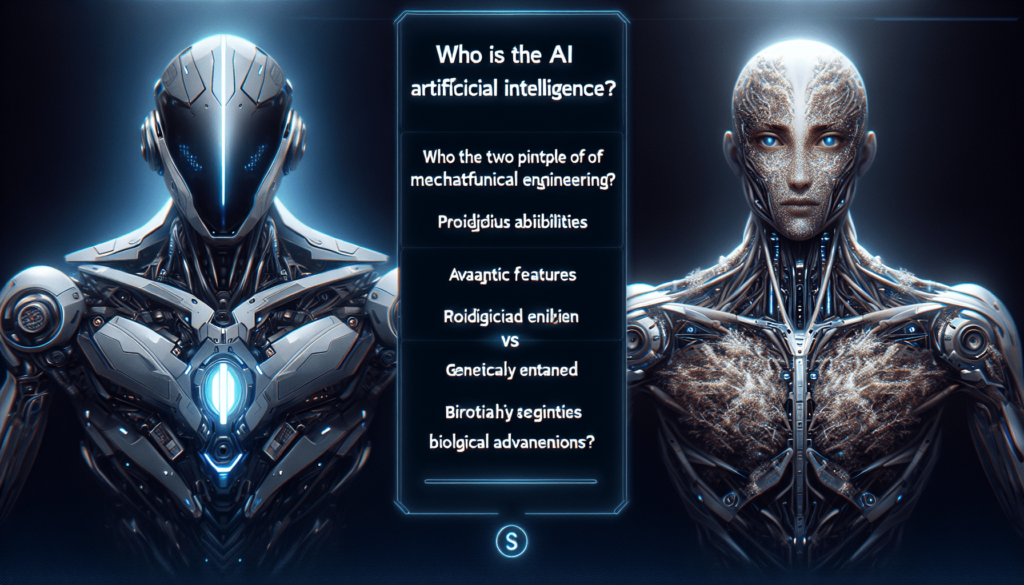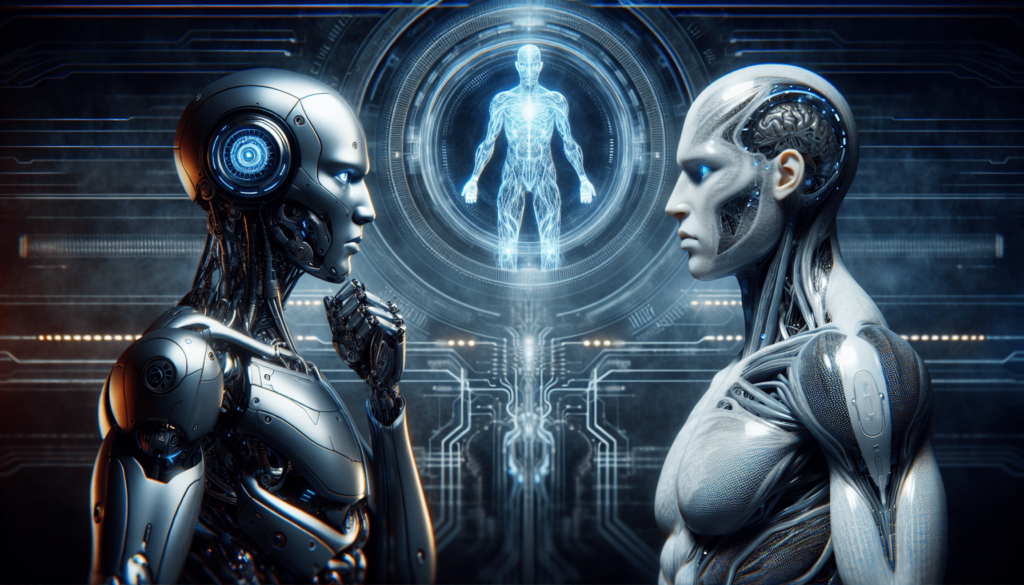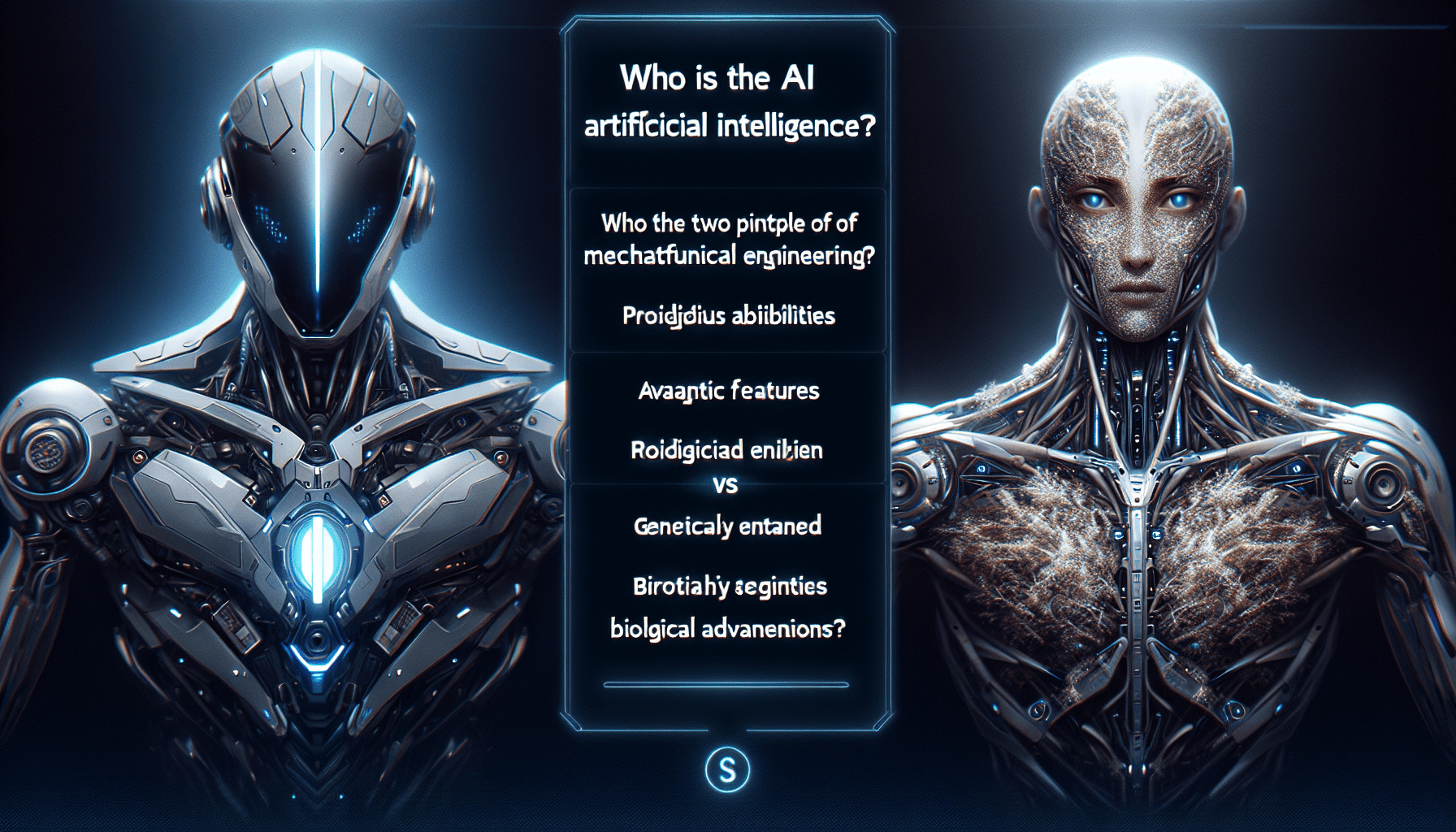Welcome to a brief overview of the differences between Gen AI and AI. While both are forms of artificial intelligence, Gen AI is a more advanced and sophisticated version that is specifically designed to mimic human intelligence and behavior. In contrast, traditional AI focuses more on tasks and data analysis. Understanding these distinctions can help in navigating the evolving landscape of AI technologies and their potential impact on various industries. Let’s explore the nuances between Gen AI and AI to gain a better understanding of their functionalities and applications. What is Gen AI vs AI?
So you’ve heard the terms “Gen AI” and just “AI” thrown around in the tech world, but what exactly is the difference between the two? How do they interact with each other, and what are the implications of these technologies for the future? Let’s break it down for you in this article.

AI: Artificial Intelligence
AI, or artificial intelligence, is a broad term that refers to the ability of a machine to imitate intelligent human behavior. It involves the development of computer systems that can perform tasks that usually require human intelligence, such as visual perception, speech recognition, decision-making, and language translation.
AI systems are designed to take in large amounts of data, learn from it, and make decisions or predictions based on that data. They use techniques like machine learning, natural language processing, and neural networks to process information and find patterns within it.
Traditional AI
Traditional AI refers to the first generation of artificial intelligence systems that were developed using rule-based programming. These systems followed a set of predefined rules and instructions to carry out tasks. While they were effective for simple and well-defined problems, they had limitations when it came to handling complex and unstructured data.
Machine Learning
Machine learning is a subset of artificial intelligence that focuses on developing algorithms and statistical models that enable computers to learn from and make predictions or decisions based on data. Machine learning algorithms use statistical techniques to identify patterns in data and adjust their actions accordingly.
Gen AI: Generative AI
Gen AI, short for generative artificial intelligence, is the next generation of AI technology that goes beyond simply imitating human behavior. This technology has the ability to create new content, ideas, and even its own algorithms without being explicitly programmed to do so.
Generative AI systems are designed to generate output that is not explicitly programmed, using techniques like neural networks and deep learning to understand and replicate complex patterns in data. These systems have the potential to revolutionize industries like art, design, and content creation by enabling machines to collaborate with humans in the creative process.
Creative Applications
One of the key differences between Gen AI and traditional AI is the focus on creativity and generative capabilities. Gen AI systems can generate art, music, and other creative content that is indistinguishable from human-made work. This has implications for industries like advertising, entertainment, and design, where creativity and originality are highly valued.
Collaborative Intelligence
Gen AI is also known for its ability to collaborate with human users in real-time, using feedback and input to improve its output. This collaborative intelligence allows machines to work alongside humans in creative endeavors, combining the strengths of both to create something new and innovative.
The Interaction Between Gen AI and AI
While AI and Gen AI are distinct technologies with different capabilities, they are not entirely separate. In fact, these two types of artificial intelligence can complement each other and work together to achieve more advanced and innovative results.
Enhancing AI with Gen AI
Gen AI can enhance traditional AI systems by introducing creative and generative capabilities that were previously beyond their reach. By integrating generative AI techniques into existing AI frameworks, developers can create more versatile and adaptive systems that can generate new ideas, content, and solutions.
Augmented Decision-Making
Combining AI and Gen AI can also improve decision-making processes by incorporating creative insights and alternative perspectives into data analysis and problem-solving. This augmented decision-making approach can lead to more innovative solutions and strategies that can drive business growth and competitive advantage.
The Future of AI and Gen AI
As AI and Gen AI continue to evolve and advance, their impact on society and the economy is set to grow exponentially. These technologies have the potential to revolutionize industries, transform business processes, and shape the way we live and work in the future.
Ethical Considerations
With great power comes great responsibility, and the development and deployment of AI and Gen AI technologies raise important ethical questions. Issues like data privacy, algorithmic bias, and the potential for job displacement need to be addressed to ensure that these technologies are used responsibly and ethically.
Education and Skills Development
As AI and Gen AI become more prevalent in various industries, the need for skilled professionals who can design, develop, and manage these technologies is increasing. Educational institutions and training programs are starting to offer courses and certifications in artificial intelligence to equip the workforce with the skills needed to succeed in the digital age.
Innovation and Creativity
One of the most exciting aspects of AI and Gen AI is their potential to drive innovation and creativity in all sectors of the economy. These technologies can help businesses unlock new opportunities, improve processes, and create value in ways that were previously unimaginable.

Conclusion
In conclusion, the difference between Gen AI and AI lies in their focus on creativity and generative capabilities. While traditional AI systems are designed to imitate human intelligence, Gen AI goes beyond imitation to create new content, ideas, and algorithms.
By combining AI and Gen AI technologies, developers can create more versatile and innovative systems that have the potential to revolutionize industries, transform decision-making processes, and drive business growth. As these technologies continue to evolve, it is essential to address ethical considerations, invest in education and skills development, and foster a culture of innovation and creativity to ensure their responsible and beneficial use in society.
